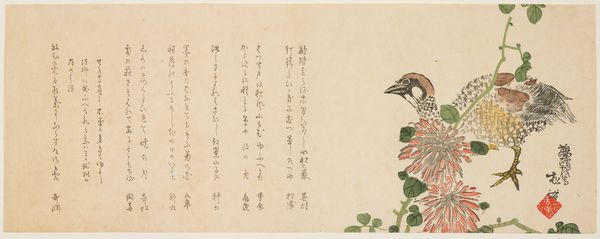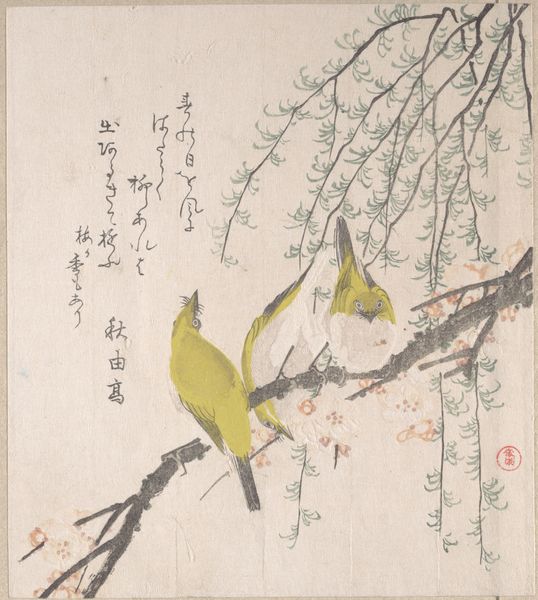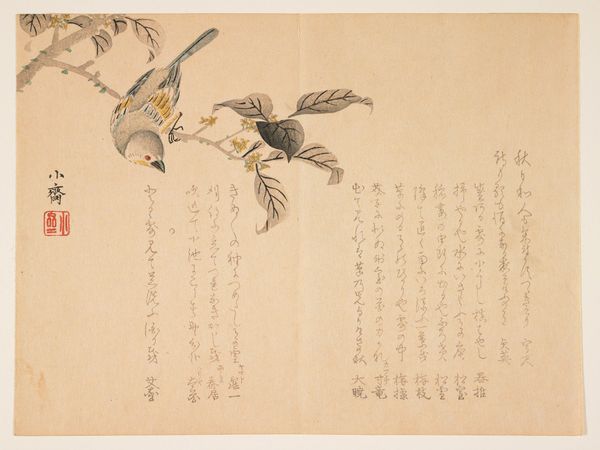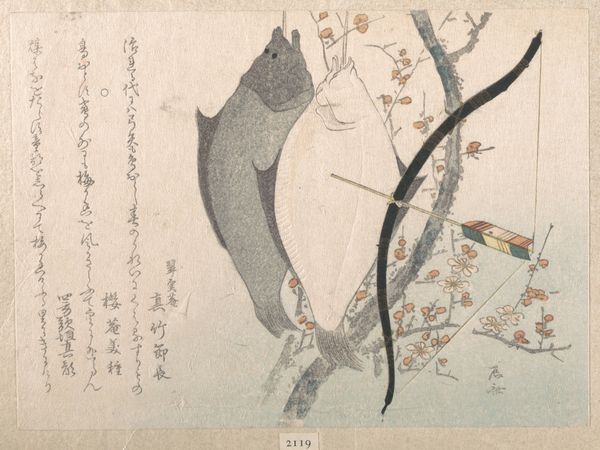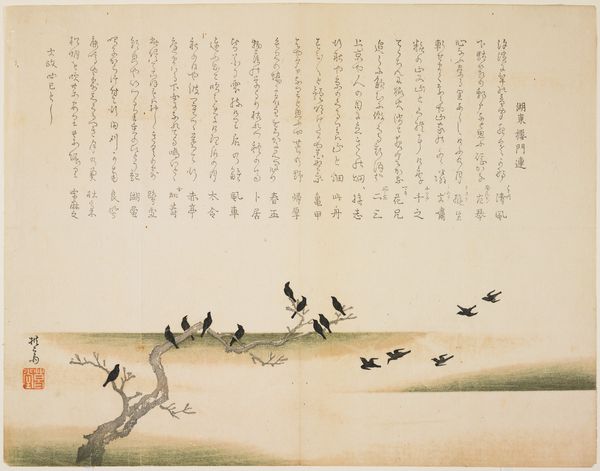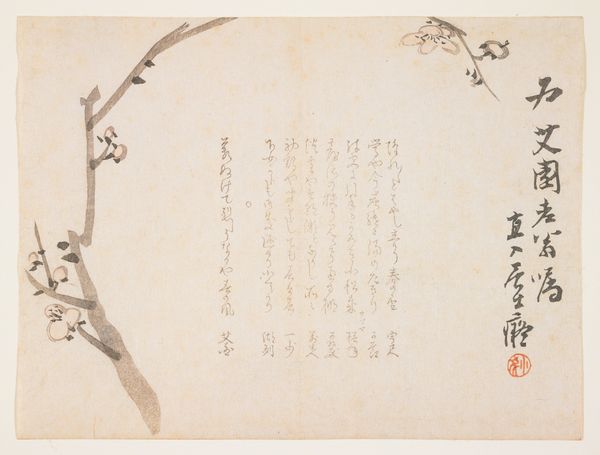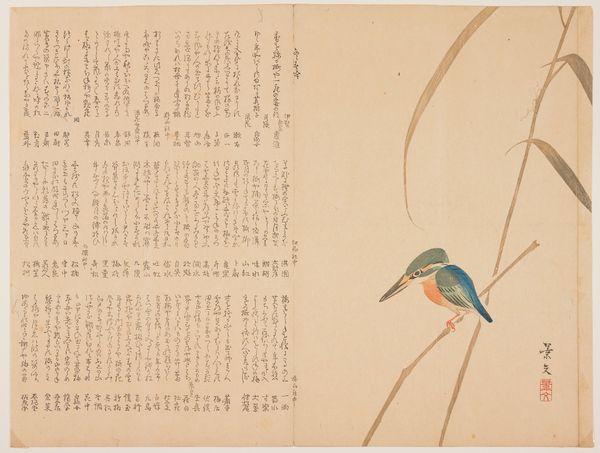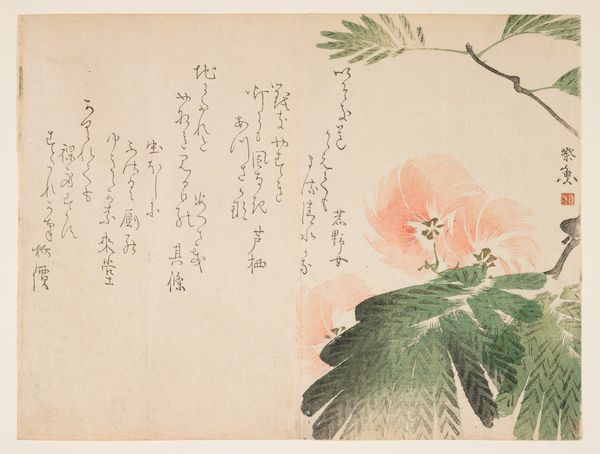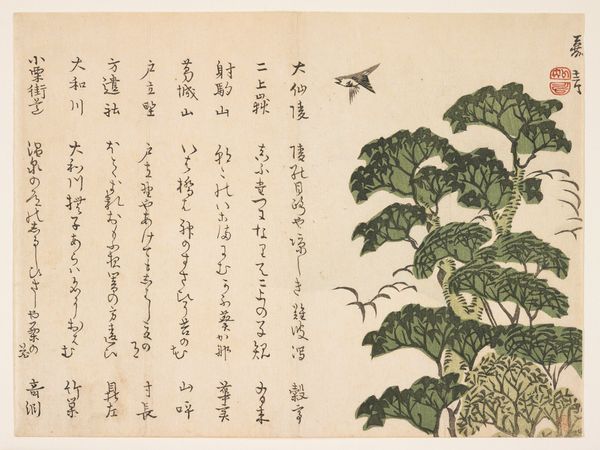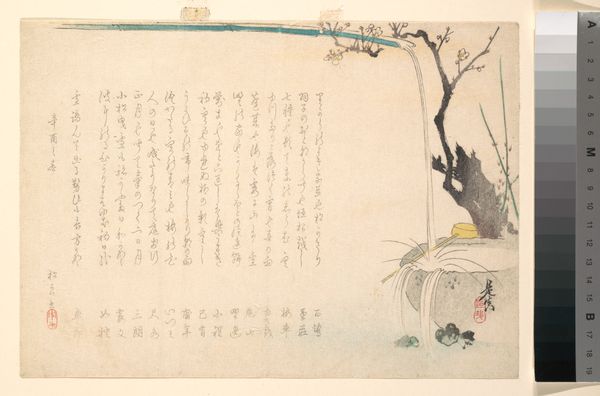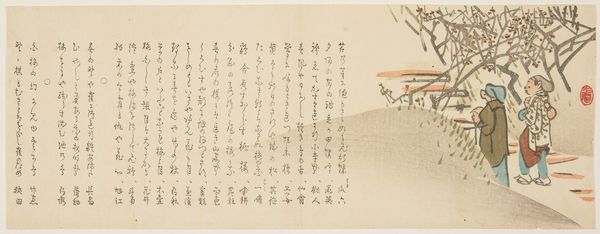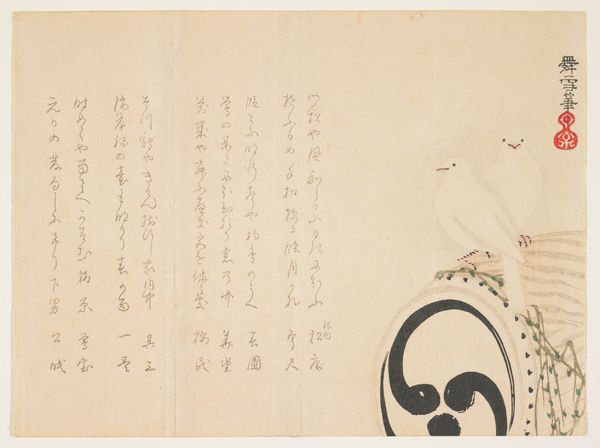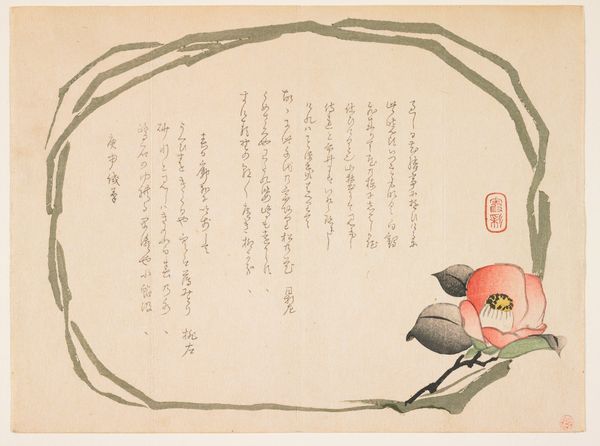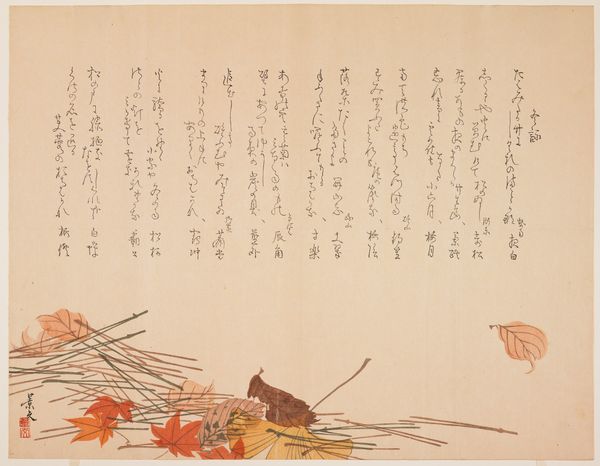
drawing, painting, print, ink
#
drawing
#
water colours
#
ink painting
#
painting
# print
#
asian-art
#
landscape
#
ukiyo-e
#
ink
#
botanical drawing
#
botanical art
Dimensions: 7 5/16 x 9 3/4 in. (18.6 x 24.8 cm) (image, sheet)
Copyright: Public Domain
Curator: Immediately, I'm struck by the sparseness. The negative space dominates. It feels delicate, almost ephemeral. Editor: We're looking at "Nightingale on a willow branch," created around 1860. The artwork, which can be found here at the Minneapolis Institute of Art, seems to employ ink and color washes on, what appears to me to be, paper. Curator: Yes, the economy of line is exquisite. The bird itself, perched on the thin branch, is rendered with just enough detail to suggest its form and texture. It’s a masterful study in reduction. Look at how the artist uses subtle variations in tone to define the bird's plumage. Editor: Considering the socio-political context of 1860, this print reflects the rise of artistic interest in depictions of nature, specifically within the Ukiyo-e tradition which saw artists creating inexpensive works during an era defined by social change and commercial expansion. It was during this time that landscape painting and images of birds and flowers became more and more fashionable. Curator: I see the poem too. One notices how the placement of the calligraphy balances the composition. Its flowing script contrasts with the stillness of the bird. The two seem interdependent; one gives the other space to breathe. What semiotic systems are operating here? Editor: The text actually underscores this interdependence, referring directly to the visual image in what may be the artist's words, or words of the print shop owner perhaps? The placement and relationship between images, and texts of the Tokugawa or late Edo period tell us a lot about social structure. Curator: I agree, these juxtapositions aren’t simply decorative; they’re structurally essential. Remove the inscription or the bird, and the piece loses its delicate equilibrium. One could look for this delicate and fleeting sense of equilibrium as evidence for Zen-like themes reflected from wider, older, cultural norms that helped to shape print culture at the time. Editor: Indeed, while on the surface this print celebrates the beauty of the natural world, it simultaneously functions as a commentary on the public role and social meaning-making afforded within art during the period of the work's creation. Curator: For me, it stands as a testament to the power of suggestion—how much can be communicated with so little. Editor: And I might add, to what ends and to whom was that communication directed?
Comments
No comments
Be the first to comment and join the conversation on the ultimate creative platform.
